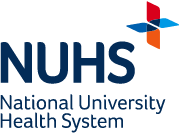Led by a paediatric oncologist, the team at NUH designs a comprehensive treatment plan, beginning with a detailed history and physical examination to understand the child's symptoms and their progression.
Diagnosis test and procedures
Blood Tests
- These include complete blood count (CBC), biochemistry and liver function tests.
- Children with lymphoma often exhibit an inflammatory profile in their CBC, especially in types like Hodgkin lymphoma, ALCL, Burkitt's lymphoma (BL) and diffuse large B-cell lymphoma (DLBCL).
- Inflammatory markers may show elevated leukocyte and neutrophil counts, high eosinophil counts, lymphopenia, increased platelet count or anaemia.
Imaging Studies
- Chest X-ray
- Computed tomography (CT) scans
- Positron emission tomography (PET) scans, where a small amount of radioactive glucose is used to highlight malignant cells, which consume more glucose than normal cells.
Other Additional Tests
- Lumbar puncture: To examine spinal fluid for central nervous system involvement.
- Bone marrow aspiration and trephine biopsy: Sampling of bone marrow and a small piece of bone using a hollow needle, usually from the hipbone or breastbone.
- Directed biopsy: Tissue samples are taken from the affected area, such as a rash, lump or lymph node.
Treatment Options
Chemotherapy
Chemotherapy, which is central to lymphoma treatment, employs powerful medications to destroy or inhibit the growth and division of cancer cells. These medications are typically administered intravenously, but some are taken orally. Combination therapy, using various medications simultaneously, is common, with treatment duration depending on the cancer's type and stage.
For queries about chemotherapy and potential side effects such as hair loss and fertility issues, please consult your paediatric oncologist.
Radiation Therapy
Radiation therapy employs high-energy X-rays or other types of radiation to target cancer cells. In young children, it can affect bones and soft tissue growth and may increase the risk of heart disease and secondary cancers later in life. It is less commonly used in treating Hodgkin lymphoma in children.
Surgery
Lymphoma usually spreads throughout the lymph system, negating the presence of a specific tumour site. However, if there is a significant accumulation of lymphoma in one area, surgery to remove the tumour may be considered.
Targeted Therapy
Increasingly utilised for advanced or treatment-resistant lymphomas, targeted therapy attacks specific substances essential for cancer growth while sparing normal cells. Examples include using Brentuximab, an anti-CD30 antibody-drug conjugate targeting CD30 on lymphoma cells, and Crizotinib, an anti-Anaplastic Lymphoma Kinase (ALK) inhibitor used in high-risk ALK-positive ALCL cases.
Crizotinib, an anti-Anaplastic Lymphoma Kinase (ALK) inhibitor, is used as upfront therapy to target ALK-positive ALCL for high-risk cases.
Stem Cell Transplant
For hard-to-treat lymphoma or recurrence after chemotherapy, high-dose chemotherapy followed by an autologous stem cell transplant (using the child's own stem cells) may be proposed. The child's stem cells are harvested, stored and later infused back into their body.
In certain situations, an allogeneic transplant (using a donor's stem cells) may be required, particularly if the child's lymphoma relapses or does not respond to an autologous transplant.
Follow-Up Care
Effective follow-up care is a vital aspect of treatment for children with lymphoma. The frequency of follow-up visits depends on the type of cancer and the treatments used. Children undergoing treatment may need follow-up checks as often as weekly or as infrequently as monthly.
After treatment completion, follow-up care continues. Typically, visits are scheduled every three months for the first year, biannually for the second year and then annually thereafter.
These visits may include blood tests and imaging tests like PET-CT scans to monitor for lymphoma recurrence. Additionally, late effects of cancer treatment will be assessed, including growth and hormone disturbances and organ function issues in the liver, kidneys, lungs and heart.

















